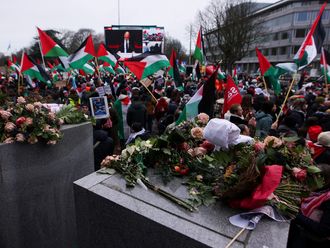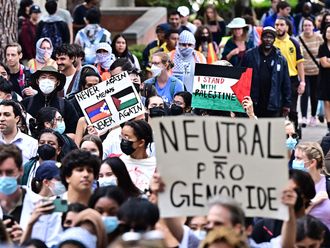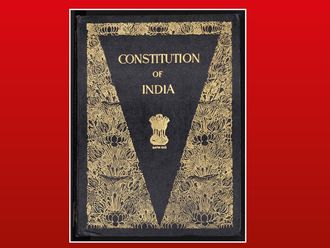_resources1_16a4a16d4ea_medium.jpg)
In the summer of 1999, I was standing outside our ancestral home in Srinagar, the capital of Indian-administered Kashmir, when I saw fighter jets roar past in the skies above me. The Indian Air Force was carrying out sorties towards the mountainous district of Kargil to dislodge Pakistani militants and, as we found out later, Pakistani soldiers. The troops had quietly occupied the snow-capped peaks as part of a stealth operation.
The sight and sound of sophisticated military hardware provided a brief thrill, but it soon turned into panic. What if these bombers dropped their lethal cache on our home? At night, as I lay in bed, I imagined our neighbourhood as rubble from which acrid smoke rose. I imagined dear ones lying dead in homes and on streets, like in war films. I saw friends and myself as bodies in pools of blood. It was terrifying.
I was reminded of those febrile, frightening times, during the Kargil war, which lasted two months, as news came of the latest episode in the 71-year-old military conflict over this disputed region in the foothills of the Himalayas.
Indian fighter jets this week crossed into Pakistani territory to target — according to Indian officials — a militant camp run by Jaish-e-Mohammed (JeM), a Pakistan-based Islamist group that had claimed responsibility for a suicide bombing that killed at least 45 Indian paramilitary personnel in Kashmir on February 14. Indian officials said the air strike killed “a very large number of militants” in the camp, in the forests of the Khyber Pakhtunkhwa province of Pakistan. They said the incident had been a “pre-emptive strike”, as India had intelligence that the group was planning more attacks. Pakistan rejected the claim, insisting that India’s incursion had not caused any damage, and the Pakistani government stated it would respond to the strikes “at the time and place of its choosing”.
In a major tit-for-tat escalation of the conflict, that response came on Tuesday, when Pakistan said its air force had shot down two Indian fighter jets. A spokesperson said that one of the planes had fallen in Pakistani territory and two pilots had been captured. India’s foreign ministry confirmed the loss of a fighter plane and said one pilot was missing. A video purportedly showing the captured pilot appeared on the internet. This came soon after Pakistan said it had carried out air strikes across the line of control — one of the most heavily militarised borders in the world — that divides part of Kashmir. (China controls another part in the east.)
Pakistan’s Prime Minister Imran Khan has suggested the strikes were political, carried out for “domestic consumption” by his Indian counterpart, Narendra Modi, ahead of national elections in May. There may well be some truth in this statement. Kashmir has been used as a pawn in the political power struggle in the region between India and Pakistan ever since partition.
Amid claims and counterclaims, the two countries have gone back to their old duel, exchanging artillery shells across the de facto border. There are already reports of injuries to civilians in border villages. I called my family in Srinagar to check if they were all right. Like most Kashmiris, they are used to living under long sieges, but they are worried now as food supplies, gas and petrol are short. In panic, people have stocked up on medicines and babyfood. They pray the war ends before it starts.
The long-running war began soon after the decolonisation of south Asia, in 1947. Under the partition plan agreed between the countries and Britain, their erstwhile colonial ruler, Kashmir was to be free to join either India or Pakistan, its statehood settled via a United Nations-mandated plebiscite. But as Maharaja Hari Singh, then king of independent Kashmir, dithered, tribesmen from Pakistan’s North-West Frontier Province moved in. The king, who had wanted Kashmir to stay independent, asked India for help, resulting in a year-long war.
Fighting again flared in 1965, coming to an end after Soviet mediation. The Kargil war, which resulted in heavy casualties on both sides, was brought to an end when the then US president, Bill Clinton, intervened. This month’s dramatic escalation follows a long season of bloodletting. Since January 2018, nearly 600 people, including civilians, militants and soldiers, have been killed. Hundreds of Kashmiri civilians have also been wounded, scores of them blinded by pellet guns Indian forces have used to quell civilian protests. Kashmir has become a vast cauldron of sadness, fear and anger.
Now, amid comic-book celebrations of war on both sides, there exists a real danger that the decades of low-intensity war may turn uglier. The two countries’ leaders are being exhorted, in TV studios and on social media, to take tough action. In their unsightly quest for prime-time ratings, these armchair warriors do not seem to care that the clamour for more war means copious bloodshed in faraway borderlands. It will be Kashmiris who will bear the brunt of such a destructive turn of events.
Given this backdrop, India and Pakistan must surely now realise that resolving Kashmir is an infinitely better course of action than war. The nuclear-armed rivals have been here before, many times, and the fact that they’re now in yet another conflict can mean only one thing: That their past actions haven’t worked for either country — and most definitely not for Kashmir. It is time for the two states to give up their intransigent positions.
An old uncle of mine once told me: You can always go back to war if peace doesn’t work.
It’s time to make efforts to avert a full-fledged conflagration that will create widespread carnage.
— Guardian News & Media Ltd
Mirza Waheed is the author of the novels The Collaborator, The Book of Gold Leaves and Tell Her Everything.









